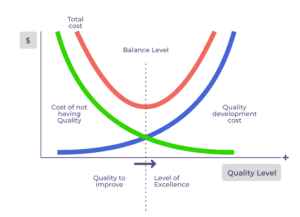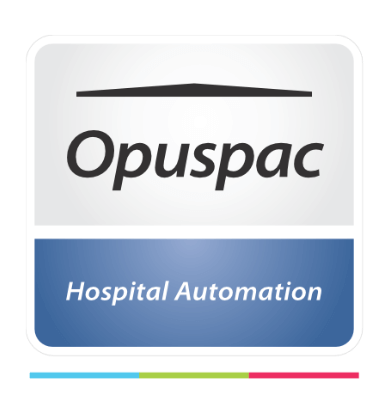Haven’t you felt in recent years the sensation of being overtaken by events?
You probably blamed it on a lack of resources, equipment, or personnel. But did you ever think that you needed to change the way you look at reality? Change your paradigm, or your mindset? Not that he is outdated in his profession, because the same happens to many colleagues throughout the hospital sector, due to the time it takes to adapt to new realities.
By observing the universe of the Healthcare sector from the outside, with more than five decades of professional and business experience, I am able to identify patterns and offer valuable insights. This article seeks to highlight some of these insights, promoting a new mindset to face the challenges ahead.
It doesn’t matter if you’re fine today, and no problem. Reality will come to everyone.
Let’s look at the following chart:

You are walking the blue line, with incremental thinking, while complexity and reality advance along the exponential curve. When you’re on top of the curve you don’t realize the problem, until after a breaking point, you can’t reach reality and you won’t have everything solved. Take the example of global warming.
However, every year you see a number of new illusions, new technologies that promise to solve problems in full. Now it’s artificial intelligence (AI), previously it was telemedicine, IoT, Blockchain and I don’t know what 5.0. And in reality all of this can help, but it doesn’t solve it.
So, let’s delve into the root causes that you can use and preferably without investment.
“Mindset” means: A way of thinking, or seeing things, an attitude.
The proposed solutions are not organized by priority, as each hospital has a different problem, given the diversity of cases.
Mindset 1. Growing is not the solution, changing the model is. You’ve got a shapeless monster. Increasing it does not solve its essence, it remains misshapen. You have to change monsters. We live in an increasingly complex society and we continue to have superficial answers.
As Taiichi Ohno, creator of the Lean or Lean Toyota system, says: “common sense is usually wrong.” He is saying, that we should not be so superficial, we should apply the rule of the 5 whys to each topic and not stick with the first why.
Experience is overestimated and those who decide which solution to take are those in power and not the experts, who are close to the problems. The problems are systemic and need to be addressed by multicultural groups from different sectors, inside and outside the institution. If you want to get creative, beware of the experts, as they have a lot of plastered answers.
Mindset 2. Where are you going? There is a story of a man who was riding at full gallop and when he came across a monk, who surprised asked: “And where are you going?” He replies, “I don’t know, the horse knows.”
At the end of each year, when we analyze what happened, we see that many of our actions were reactions to everyday events, external to us, and not the result of a strategy with a sought purpose. We have to define a clear strategy, with a powerful idea, easy to get a lot of people excited. We have to ask, “Where am I, where do I want to go, and how do I achieve this.” On a daily basis, we are rushing from one incident or urgency to another. This is called an incidental strategy. We prefer to restudy the scenario with a structural vision, based on a cultural change within the organization.
Mindset 3. Before you can implement a strategy, you have to establish the Culture.
“Leaders need to understand mechanics and plumbing, but they also need to love poetry in order to ignite the hearts and minds of those they lead” Tsedal Neely.
Culture needs a goal, with a certain level of abstraction that can reach all groups of people, with a higher and more abstract category. It can also be a utopia or idealized solution, which attracts and then allows us to materialize the actions to implement the utopia.
I often tell a story of 4 friends who go fishing every weekend. While everyone carefully prepares their hooks, one of them always arrives unprepared and asks for help from the others. Until one day, one of the friends says: “This Saturday, don’t invite Zeca, because I don’t feel comfortable.” Moral of the story: those who do not add value to their surroundings will be rejected. A good culture could be: We are there to add value to others! In this “environment” I include the Health Ecosystem. No solution will be valuable if it does not integrate others, inside and outside the institution. Strategic thinking, supported by a fresh culture that can animate the hearts of many, with a vision of the ecosystem, begins to shape what I call the proper mindset.
The solution can only be solved with a more holistic vision, seeing the common good. Gone are the days when we could solve our problems by taking from another. We have to be creative and increase the size of the cake.
Mindset 4. A culture of power will have little chance of becoming the right mindset. I’m not talking about just avoiding a culture of fear, which would be terrible. I’m going beyond that. A modern, future-oriented institution should have a more horizontal hierarchical environment, based on clear norms that everyone can abide by, within a fair system. The authority gradient is a term that defines the difference in authority between a boss and his subordinate. In the aeronautical industry there was the problem that the sub-commanders of the aircraft did not dare to say that the aircraft was too low for landing. Going beyond this example, we have to perceive several gradients of authority within the institution, as a problem of exaggeration of power that should be avoided, starting from the top level.
Mindset 5. Transparency is the Ethics of the 21st century. We will not be able to implement mindset 4 if we are not transparent and open. We have to let the criticism go up to the top level.
When a plane crashes, all its parts are collected and analyzed in a hangar for several months by people from another organization. When a person dies as a result of an adverse event, we do not do the same. The lack of transparency is based on the feeling of fear. Despite the legal claims, we would gain more by having a superior culture that hides the problems forever. It has been shown that more than 95% of the cases of adverse events are the responsibility of the hospital system, that is, more of procedures and training, than of people. It would be a good policy to release all professionals from blame, who help to declare the mistakes, except those of a repeated and criminal nature. Protecting whistleblowers is also necessary if the person responsible has not self-reported.
Mindset 6. There needs to be a balance between the internal sectors. The two major cultural groups of a hospital are: the clinical sector and the management sector. When there is no harmony and the goals and values of these two sectors are not deeply shared, then we move to a system in which one sector dominates the other, with important consequences. The integration of these two sectors into a higher objective implies an attitude of transparency and commitment, within an environment with hierarchies that respect each other equally. Just as the clinical industry wants the best for its patients, the management industry wants to consolidate and increase its profits. Mindset 8. Customer orientation. “Customer centric aproach” is a methodology, centered on the customer, here the patient. It is an orientation to study and prioritize everything that the customer has as satisfaction, widely used by many companies. In this regard, in addition to curing diseases, institutions are concerned with hotels, food and even the vehicle parking system. Customer satisfaction or User Experience (UX) is a whole topic, as it implies measuring, to give satisfaction to the patient. Intertwined with the themes of Value-Based Medicine, this theme involves measuring patient satisfaction, including when they leave the hospital and are in the recovery period. Both objectives are legitimate, but antagonistic and must be resolved with a minimum of tension, with comparable powers and respect between the parties. Many operations in the hospital are similar to those of any other company. While the priority is to attend to clinical issues, in other companies the efficiency of each process is much more measured. In an industry, everyone has the stopwatch in hand. A fair and appropriate balance must be struck between the two antagonistic positions, because in the end the Hospital is an enterprise that requires economic results, either to make a profit or for its subsistence.
Mindset 7. Change of business model. Every business in the world is moving towards a subscription system. Soon you won’t be buying cars anymore, you’ll be taking out a subscription to have the car of your choice. The same goes for many products and services. The hospital sector has no better business than billing for a service it doesn’t need to provide. At least in one proportion. Health insurance coverage allows you to train, educate, and prepare your patients so they don’t get sick. And with that, reduce your costs and increase your profits. Healthcare companies that invest in prevention spend up to 30% less than others. When a hospital works for a region, it may even be interested in improving the water and sanitation system, to avoid later expenses. There are already health insurances that subsidize gyms. Of course, billing for eliminating or mitigating disease is totally different than a model for keeping the patient healthy.
The beneficiary of this change would be the patient himself. Today, when an adverse event occurs, the same hospital continues to bill more services, which is still an absurdity of the system.
Mindset 8. Customer orientation. The “client-centric approach” is a methodology, centered on the client, here the patient. It is an orientation to study and prioritize everything that the customer has as satisfaction, widely used by many companies. In this sense, in addition to curing diseases, the institutions are concerned with hotels, food and even the vehicle parking system. Customer satisfaction or User Experience (UX) is quite an issue, as it involves measuring, in order to give satisfaction to the patient. Intertwined with the themes of Value-Based Medicine, this topic involves measuring patient satisfaction, even when they leave the hospital and are in the recovery period.
The Lean Healthcare system, with a direct impact on Quality and Economy (lean system), tells us that everything that does not add value to the customer must be eliminated. With hospital waste close to 30%, reducing this number would even double the current results. Although the process is not automatic and takes a few years to change the culture, and until many know how to see what does not add value to the customer, it is very important and necessary as shown by the results of many hospitals around the world. We have too much stock to spare, too many indoor walks that can be avoided, and too much space to recover. More information can be found in the book “Lean Healthcare” that I authored, which is available for free download on the Opuspac University (www.opuspac-university.com/en/) platform.
The application of Lean Healthcare standards, (not to be confused with Lean 6 Sigma), is another way to improve the Mindset, oriented to what really offers utility to the client of the next process or to the patient who is the end customer.
Mindset 9. Improving Quality is also good business. A study of the most profitable hospitals in the United States reveals that they place a lot of emphasis on Quality Assurance (QA). The latter concept encompasses everything from quality to patient safety. A QA management, or Lean, Quality and Safety (LQS), with a hierarchy of direct dealings with the hospital director, will certainly improve results.

Here we can observe how a hospital that is to the left of the minimum point, by increasing quality, moves to the right, reducing its total costs, while increasing its investments in quality. The few hospitals to the right of the low point are those that put quality as a primary factor in their business strategy and can profit the most from it.
These solutions are purposely utopian and the reason for expressing this here is to provoke new ideas and visions, different from everyday ones. You may not be able to apply all of them, but a mindset is not a sequence of procedures, it is a vision, an ideal to be sought. For exceptional times, exceptional solutions are required.













